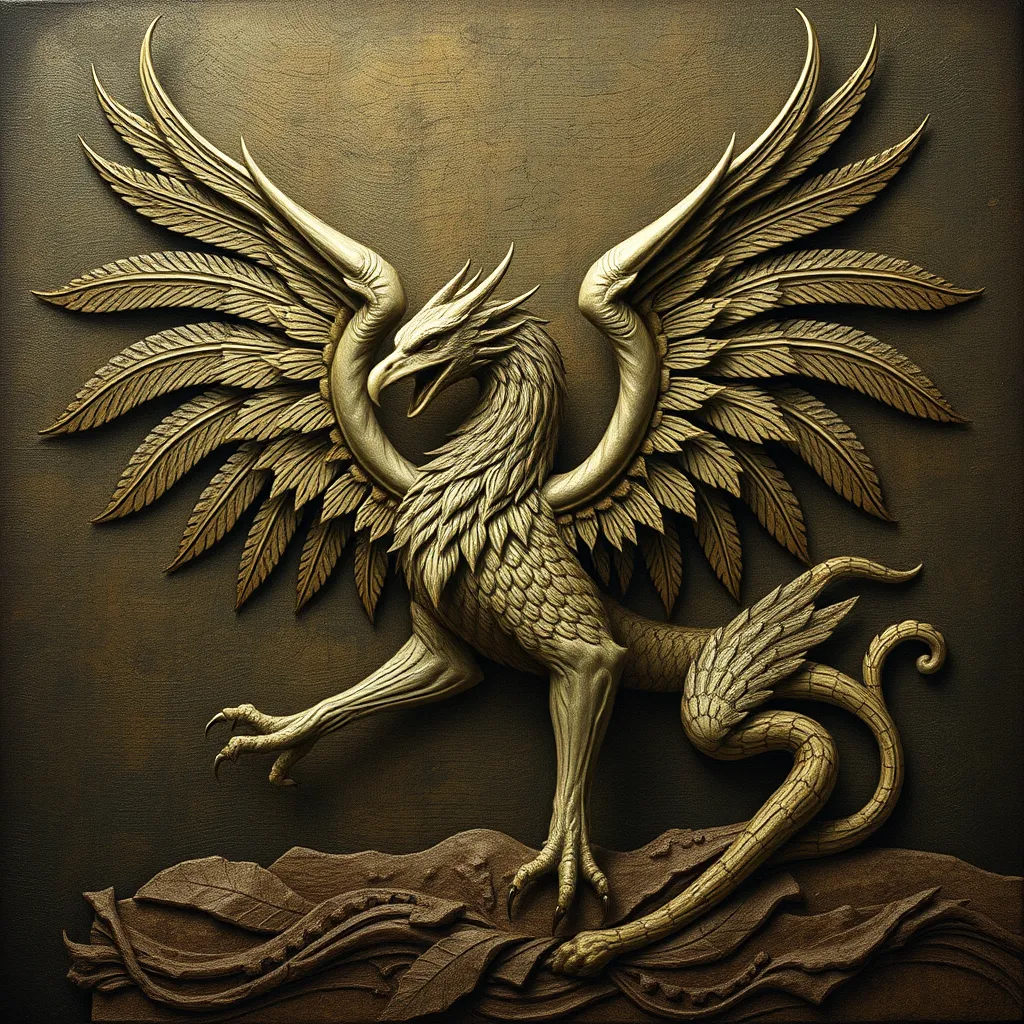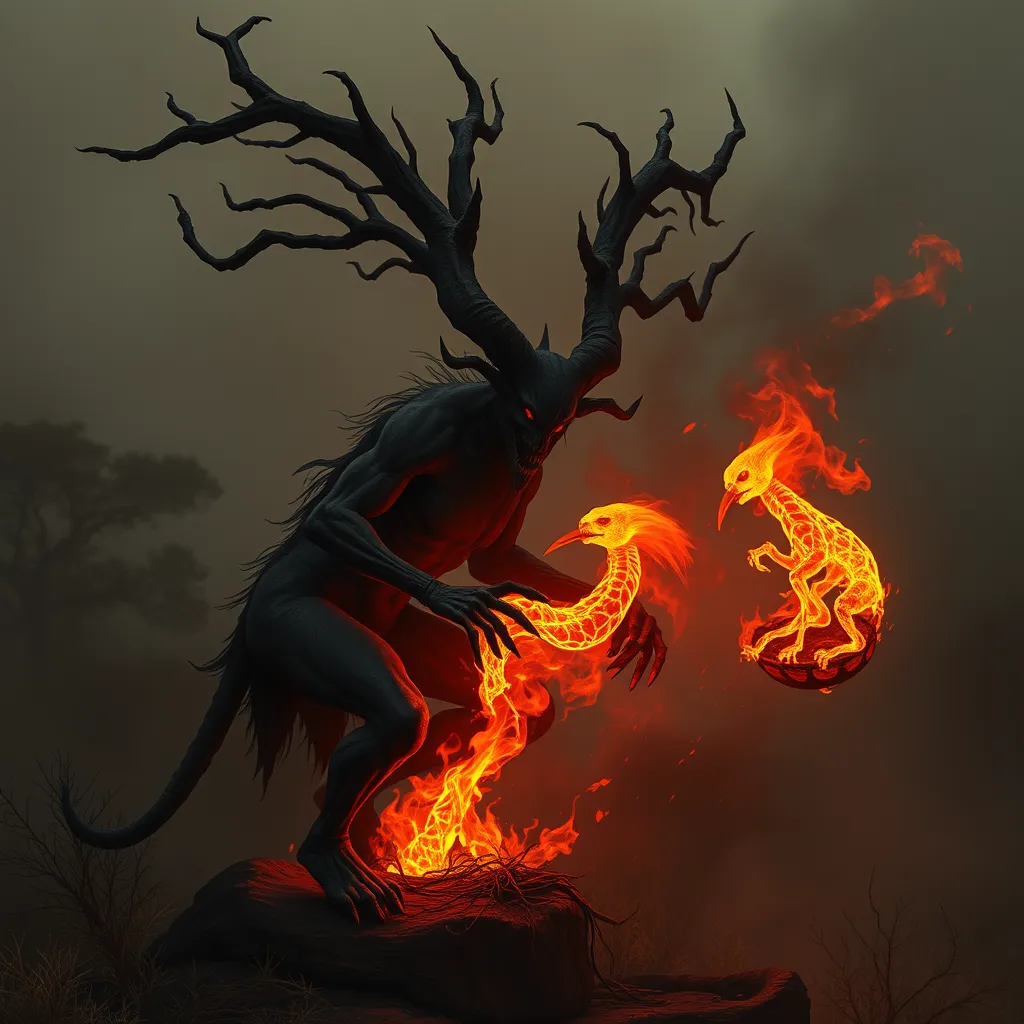The Griffin in Medieval Art and Literature: A Symbol of Majesty and Power
I. Introduction
The griffin, a majestic creature with the body of a lion and the head and wings of an eagle, has captivated the imagination of cultures throughout history. In medieval culture, it emerged as a symbol of power, protection, and nobility. This article explores the representation of the griffin in medieval art and literature, detailing its historical origins, artistic depictions, and cultural significance.
II. Historical Origins of the Griffin
A. Ancient roots in myth and folklore
The griffin’s origins can be traced back to ancient civilizations, particularly in Persian and Egyptian mythology, where it was often depicted as a guardian of treasures and sacred sites. In these early narratives, the griffin was revered for its fierce protection and majesty, embodying the strength of the lion and the swiftness of the eagle.
B. The transition of the griffin’s symbolism into the medieval period
As the griffin entered the medieval period, its symbolism evolved. No longer just a guardian, it became a representation of divine power and authority, often associated with kings and the church. The creature’s hybrid nature made it a fitting emblem for the complexities of medieval society, where the terrestrial and the celestial coexisted.
III. The Griffin in Medieval Art
A. Artistic representations in illuminated manuscripts
Illuminated manuscripts from the medieval period frequently showcased the griffin in elaborate illustrations. These artworks often depicted the griffin in various contexts, such as:
- Guarding sacred texts or religious figures
- Participating in hunts or battles alongside knights
- As part of intricate border designs, symbolizing the connection between heaven and earth
B. Sculptural depictions in cathedrals and public spaces
Griffins were also prominently featured in the architecture of cathedrals and public buildings. Carvings and statues served multiple purposes:
- As protective figures at entrances, warding off evil
- Emblems of the church’s power and authority
- Decorative elements that conveyed wealth and status
C. Use of the griffin in heraldry and coats of arms
In heraldry, the griffin became a popular symbol for noble families. Its presence on coats of arms signified:
- Strength and bravery, akin to that of a lion
- Wisdom and vigilance, traits associated with the eagle
This duality made the griffin an ideal emblem for families wishing to convey their noble lineage and martial prowess.
IV. Symbolism of the Griffin
A. Interpretation of the griffin as a symbol of majesty and power
The griffin’s unique composition allowed it to symbolize both terrestrial and celestial authority. It was often seen as a protector of the divine and a majestic creature worthy of reverence.
B. The duality of the griffin: lion and eagle attributes
The combination of lion and eagle attributes in the griffin represented a harmonious balance of strength and wisdom. This duality was particularly appealing in medieval culture, which valued both martial prowess and intellectual achievement.
C. Associations with nobility, protection, and vigilance
Throughout the medieval era, the griffin was associated with themes of:
- Nobility—often depicted in the company of kings and knights
- Protection—guarding treasures and sacred sites
- Vigilance—symbolizing watchfulness and the ability to foresee danger
V. The Griffin in Medieval Literature
A. Appearances in epic poetry and romances
The griffin appears frequently in medieval epic poetry and romances, often serving as a powerful ally or formidable foe. Its presence adds a layer of complexity to narratives, symbolizing the struggles between good and evil.
B. The griffin as a motif in allegorical tales
In allegorical tales, the griffin often represents the struggle for virtue and the pursuit of noble ideals. Characters may encounter griffins as part of their quests, illustrating obstacles that must be overcome to achieve greatness.
C. Literary analysis of the griffin’s role in character development
The griffin’s dual nature also influences character development. Characters who interact with griffins often undergo transformations that reflect the creature’s attributes, leading to themes of:
- Redemption—characters may seek or earn the griffin’s favor
- Growth—encounters with the griffin can symbolize personal challenges
VI. Cultural Significance and Influence
A. The griffin’s impact on medieval society and values
The griffin was more than a mythical creature; it embodied the values of medieval society. It represented the ideals of chivalry, strength, and the interplay between the human and divine.
B. Comparison with other mythological creatures in medieval art and literature
While the griffin stood out, it was not alone in the medieval bestiary. Other creatures, such as dragons and unicorns, also played significant roles. However, the griffin’s unique attributes made it a favored symbol for nobility and virtue, distinguishing it from other fantastical beings.
VII. The Griffin’s Legacy in Later Art and Literature
A. Evolution of the griffin’s symbolism in the Renaissance and beyond
During the Renaissance, the griffin’s symbolism evolved, often reflecting humanist ideals. Artists began to depict the griffin in a more classical context, emphasizing its majestic form while retaining its connotations of power and protection.
B. Continued relevance in modern interpretations and adaptations
Today, the griffin continues to inspire art, literature, and popular culture. Its representation can be seen in various media, from fantasy novels to movies, showcasing its enduring allure as a symbol of majesty and power.
VIII. Conclusion
In conclusion, the griffin’s enduring presence in medieval culture speaks to its significance as a symbol of majesty and power. Through its rich representations in art and literature, the griffin has shaped cultural identities and reflected societal values. As a mythological creature, it reminds us of the complexities of human existence and the ideals we strive to embody.



